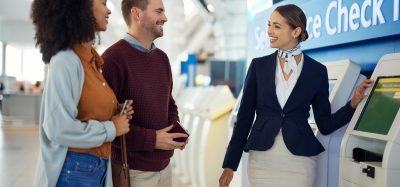From buzzwords to the runway: A step-by‑step approach to starting an airport innovation department
Posted: 23 August 2024 | Mario Ponta | No comments yet
Mario Ponta, Director of Innovation Quality and Continuous Improvement of SEA Milan Airports, shares his experience in starting the brand-new innovation department, tackling the challenge to turn ideas into effective improvement.


Copyright: SEA Milan
SEA Milan Airports, in charge of managing both Linate and Malpensa Airports (about 35 million pax overall) had no innovation department in its organisation chart, until May 2023.
Nevertheless, since 2019, SEA has marked a significant record in implementing innovations. For example, we achieved a well-recognised leadership in smart security baggage control and in implementing biometrics to enable a seamless journey (e.g. FaceBoarding at pre-security and boarding gates).
The above premise is to clarify that any discussion related to the innovation management did not come from a negative history. Quite the opposite, it came from the awareness that the positive results achieved in specific business areas, could be shared across the company, enabling synergies and cross-fertilisation, through a more structured process.
How and why, did SEA make the decision to introduce an innovation department and what challenges are expected in implementing it? In our case, the answer is the outcome of a step-by-step, self-assessment process.


First step: Set the baseline
The starting point was to share with the leadership team, with a direct involvement of the CEO, a common awareness: internal teams achieved high value innovations, everyone did his and her best and the discussion was about sharing that winning approach. This was important to build a co-operative and no-blame environment.
Second step: Share the mission, set the expectations
This is a very fundamental stage: SEA has always fostered a tangible-oriented management style and we considered it mandatory in re-thinking our innovation process, to be consistent with
that. No one, either in the leadership team or in SEA’s professional community, would have shared or actively contributed into a merely theoretical innovation process, to follow some kind of management trend or just to foster a social media reputation payback. To avoid this “buzzword trap” we decided to clearly share the mission of the innovation process and, subsequently, the expectations the organisation might have upon it. In particular, the leadership team agreed on a ‘business plan-driven approach’ meaning that the innovation priorities would have been derived from the overall business targets, focussing on the ones harder or impossible to get without an effective and innovative approach.
According to this view, we shared that innovation must improve the current situation (on a quality, environment or efficiency side), not necessarily adopting a brand-new technology, or neither a technology at all, but a new way of doing things (for example a BPR solution) or offering new services.
For that, technology is considered important, but far from being synonymous with innovation. In fact, innovation comes from the true adoption of a solution, part of which might have a technological factor. Nevertheless, airport technology is mostly a very mature one, because it needs to fit into a safety and security sensitive environment, and this is generally available on the market and fairly commoditised. This means that the truly distinctive capability for a successful innovation process is in an effective change management, enabling a day-to-day adoption.
And along with that, the leadership team shared that SEA would have:
- An ‘early follower’ approach, with few innovation spikes on which SEA has gained highly specialised skills (for example biometrics or smart security)
- A focus on internal innovation process and on ‘traditional’ suppliers, exploring open innovation, start-ups and venturing eventually, at a later stage.
Third step: Analyse and design
Given the above defined innovation strategy, the next step was to perform an organisational analysis to better understand strengths and areas of improvement of the current organisation model.
The analysis highlighted both a very good existing starting point and room for further improvement, to be enabled with organisation adjustments; in particular, it was recommended the constitution of a centralised innovation department, acting across all company units, in charge of:
- Gathering all innovation needs
- Establishing high level business priorities, derived from the business plan, and making them a shared commitment
- Performing market scouting
- Defining a project approach (e.g. POC, TRIAL), funding and skills scheduling
- Following the project start-up and monitoring it
- Performing adoption monitoring and project appraisal.
To make the innovation process even more effective, we decided to have this department reporting directly to the CEO and to combine these responsibilities with the ones related to quality management and continuous improvement.
A centralised and highly committed department would have had the opportunity to partner with business lines (that would keep the co-ownership of the innovation process) and, at the same time, to enable synergies and optimisations, catching both the plus of a centralised innovation model and the plus of a distributed one.
Fourth step: Implement
In June 2023, the ‘innovation quality and continuous improvement department’ was officially introduced and, one year later, we reflect on it Did we manage to balance the “push to innovate” with pragmatism? Or have we been running unfeasible “WOW initiatives” to get some reputational payback? Let us take a look at some of the outcomes. In a few months, the newly born innovation team gained a reputation from the other departments, as one that constantly addresses needs and suggestions that, otherwise, might have been over or under considered. Also, the international peer community, to which SEA actively contributes, has rapidly begun considering the team as a dependable partner and engaging it on surveys, panels and benchmarking on innovation items.
An internal ‘call for innovation’ was launched in September 2023 and it has been recognised as a success: over 170 ideas have been gathered by 100 colleagues from staff and operations; eight ideas (instead of the one originally programmed) have been selected by the leadership team as feasible and value adding; each of those has been funded and will be implemented within 12 months. The innovation department organised the entire process and is now performing the programme management of all these initiatives.
Besides that, other four proof of concepts have been started by the innovation team, involving artificial intelligence applications, situational awareness, baggage handling, passenger experience and more than 20 possible issues, some of which are in a very early stage, have been analysed and included in the evaluation process.
Finally, the innovation team has been successfully onboarded on the pre-existing innovation projects, such as the biometric boarding project (FaceBoarding full deployment is going live very soon in Linate).
On the other hand, we’re fully aware that many improvement areas are still there: our planning and funding process is improvable as well as the execution capability; we understand that open innovation might be a chance to catch but we still don’t have a process for that; besides, many other issues will emerge day-by-day.
Above all, we’re aware that during this first year, we experienced an amazing intellectual generosity, co-operation from the field and support from our professional community, driven by a strong sponsorship from the leadership team, especially from the CEO, COO, HR and IT; these fundamental factors, that enabled our performance, need to become a part of the company organisational culture, in order to stay when the ‘innovation WOW effect’ may slightly fade.
The upcoming months will tell us more about these issues, but I personally feel confident that, according to our early experience, a step-by-step, business-driven and, above all, a ‘buzzword-proof approach’ is likely to get good results on the runway.
Fingers crossed and seatbelts fastened!


Credit: SEA Milan
After graduating in Business Administration, Mario Ponta started his career in oil and gas, joining Eni SpA in the process improvement department. After assuming increasing responsibilities in change management projects, he moved to the power gen business unit, as the HR Manager, where he enhanced his experience in matching BPM “desk techniques” with the field adoption process. Joining SEA Milan Airports in 2010, as the Organisation and People Manager he had the chance to deep‑dive into corporate and operations processes, and their primary areas of improvement. In 2023, he was appointed as Innovation, Quality and Continuous Improvement Director to enhance the effectiveness of the SEA innovation strategy.
The International Airport Summit is open for registration!
Date: 19 – 20 November 2025
Location: JW Marriott Hotel Berlin
At our flagship event of the year, we will dive into the future of airport operations, with expert-led sessions on passenger experience, innovative smart technologies, baggage handling, airside operations, data, security, and sustainability.
This is where global airport leaders come together to share insights, challenges, and real-world solutions.
Limited complimentary passes are available for eligible professionals – first come, first served!


















